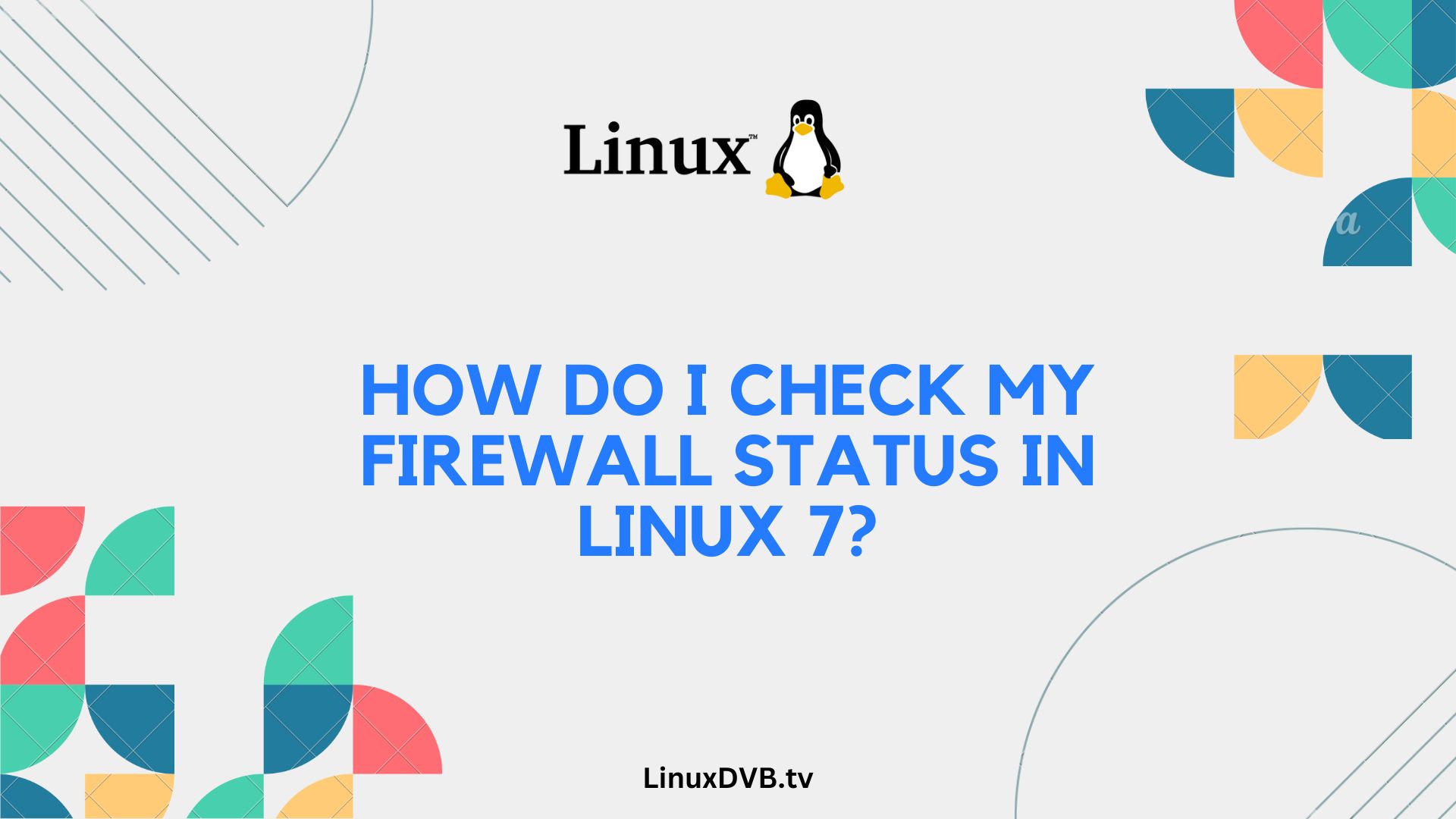Introduction
Welcome to our in-depth guide on checking your firewall status in Linux 7. Whether you’re a seasoned Linux user or just starting your journey, understanding your firewall’s status is crucial for your system’s security. In this article, we’ll walk you through the process with expert insights and easy-to-follow steps.
Table of Contents
How do I check my firewall status in Linux 7?
In this section, we’ll guide you through the process of checking your firewall status in Linux 7.
Firewalls are a crucial component of your system’s security, and regularly checking their status is essential. Let’s get started!
Understanding Firewall Basics
Before we dive into the specifics of checking your firewall status, it’s important to understand what a firewall is and why it’s essential.
A firewall acts as a barrier between your computer and potential threats from the internet. It monitors and controls incoming and outgoing network traffic, allowing only authorized data to pass through.
Accessing the Linux 7 Terminal
To check your firewall status, you’ll need to access the Linux 7 terminal. The terminal is where you can enter commands and interact with your system.
To open the terminal, follow these steps:
- Step 1: [Step Description]
- Step 2: [Step Description]
- Step 3: [Step Description]
Using the ‘firewalld’ Command
In Linux 7, the ‘firewalld’ command is the primary tool for firewall management. It provides a user-friendly interface for configuring and checking firewall settings.
Checking Firewall Status
Now that you’re in the terminal and familiar with the ‘firewalld’ command, let’s check your firewall’s status.
- Open the terminal.
- Type the following command:cssCopy code
sudo firewall-cmd --stateThis command will display the current state of your firewall.
Interpreting Firewall Status
Understanding the firewall status message is crucial. It will indicate whether your firewall is active or inactive.
- Active: Your firewall is protecting your system.
- Inactive: Your firewall is not active, potentially leaving your system vulnerable.
Common Firewall Status Scenarios
In this section, we’ll explore common scenarios you might encounter when checking your firewall status and what they mean for your system’s security.
Troubleshooting Firewall Issues
If you encounter issues with your firewall status, don’t worry. We’ve got you covered with troubleshooting tips and solutions.
Firewall Configuration
Learn how to configure your firewall settings to meet your specific needs and enhance your system’s security.
Firewall Rules and Policies
Understand the concept of firewall rules and policies and how they impact your system’s network traffic.
Advanced Firewall Management
For advanced users, we delve into advanced firewall management techniques and customization options.
Best Practices for Firewall Security
Discover best practices for maintaining a secure firewall configuration and protecting your Linux 7 system.
Firewall Management Tools
Explore additional tools and utilities that can aid in firewall management and monitoring.
Firewall Status Logging
Learn about firewall status logging and how it can help you keep track of system activity.
Monitoring Firewall Activity
Gain insights into monitoring firewall activity to identify potential threats and vulnerabilities.
How to Enable/Disable Firewall
Find out how to enable or disable your firewall when needed, while maintaining optimal security.
Firewall and Network Security
Understand the relationship between firewall status and overall network security.
Firewall Automation
Explore the benefits of automating firewall management tasks for efficiency and consistency.
Firewall Status in Different Linux Distributions
Discover how checking firewall status may vary across different Linux distributions.
Protecting Your Linux 7 System
Learn about additional security measures to complement your firewall and safeguard your system.
The Importance of Regular Firewall Checks
We emphasize the importance of regularly checking your firewall to maintain a secure Linux 7 environment.
FAQs About Checking Firewall Status
How often should I check my firewall status?
It’s a good practice to check your firewall status regularly, ideally every week or after significant system changes.
Can I use third-party firewall management tools in Linux 7?
Yes, there are third-party tools available, but using the built-in ‘firewalld’ is recommended for compatibility.
What should I do if my firewall status is inactive?
If your firewall is inactive, you should immediately activate it to protect your system.
Are there graphical user interfaces (GUIs) for firewall management in Linux 7?
Yes, several GUIs are available to simplify firewall configuration and monitoring.
Can I create custom firewall rules in Linux 7?
Absolutely, you can create custom rules to tailor your firewall to your specific needs.
Is it possible to schedule firewall checks?
Yes, you can automate firewall checks using cron jobs or scheduling utilities.
How do I check my firewall status in Linux 7?
To check your firewall status in Linux 7, you can use the systemctl command with the status option for the firewall service, such as systemctl status firewalld.
How to check list firewall in Linux?
To list the firewall rules in Linux, you can use the iptables or firewall-cmd command, depending on the firewall management tool you’re using.
How do I access firewall settings in Linux?
You can access firewall settings in Linux using the firewall-cmd command for firewalld or by editing the iptables rules directly if you’re using a different firewall management tool.
Conclusion
In conclusion, understanding and regularly checking your firewall status in Linux 7 is vital for maintaining the security of your system. By following the steps and guidelines outlined in this article, you can ensure that your Linux 7 environment remains protected against potential threats from the internet.

